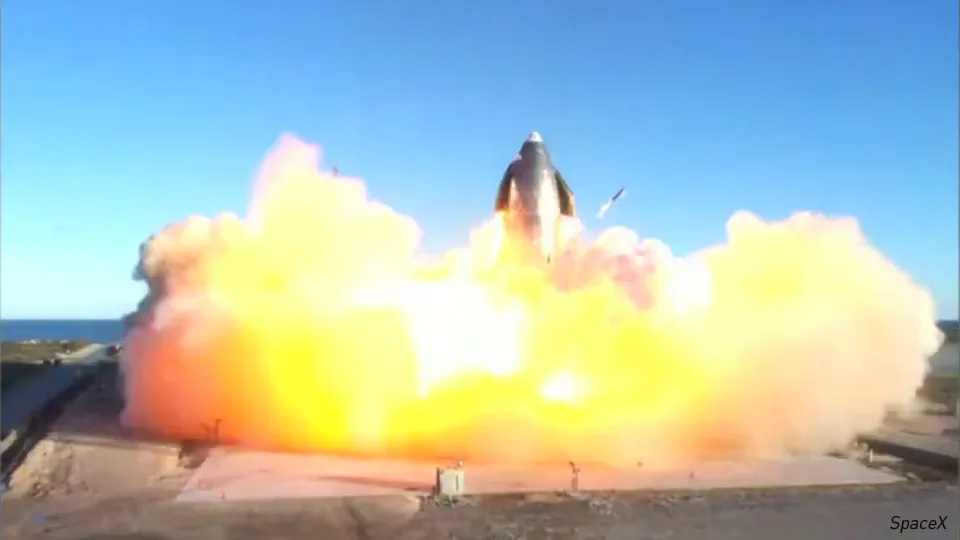
Starship explodes upon landing after spectacular test flight
SpaceX CEO Elon Musk hailed this test as an amazing success, despite losing the spacecraft upon touchdown
A new test flight of SpaceX's experimental Starship rocket went spectacularly well on Wednesday afternoon until the spacecraft slammed into the ground and exploded.
For six minutes and 42 seconds, SpaceX's Starship SN8 test rocket was up in the air over Boca Chica, Texas, on the afternoon of Wednesday, December 9, 2020. The experimental booster reached a height of 12.5 kilometres — the highest reached so far during these tests — before it returned to the landing pad.
The height the rocket reached was not the only new aspect of Wednesday's test flight. During previous 'hop' tests, Starship looked more like a flying grain silo.
For this latest flight, the addition of a nose-cone and stabilizing fins had Starship SN8 looking far more like the rocket's final intended form.
Watch below: 'Hop' landing test a success for SpaceX's Starship prototype
Upon reaching its 12.5-kilometre height, the rocket's engines shut down, allowing Starship to fall back towards the ground. It didn't plummet straight down, oriented vertically, like a Falcon 9 booster would, though. Starship SN8 used its fins to free-fall horizontally, slowing its descent back to the landing pad. Only moments before reaching the ground, the rocket reignited its Raptor engines, flipped itself vertically again, and then came in for the touchdown.
On the final approach, however, it was clear something had gone wrong. Shortly after the engines stabilized the test vehicle vertically, one cut out, while the flames from the other turned a vibrant green.
In a Tweet, shortly after the landing, SpaceX CEO Elon Musk said, "Fuel header tank pressure was low during landing burn, causing touchdown velocity to be high & RUD, but we got all the data we needed!"
During a rocket's ascent, gravity helps feed fuel down into the engines. However, during descent, the fuel pump has to work harder to maintain pressure in the system. A header tank is a reservoir of fuel that is specifically designed to help maintain that pressure. Thus, with Starship SN8 suffering low pressure from the header tank, there was no way for the engines to get enough fuel. This affected the amount of thrust they could provide, which prevented them from slowing the vehicle down sufficiently for a proper landing.
As for the 'RUD' that Musk referred to: he is talking about the explosion, or "Rapid Unscheduled Disassembly".
Regardless of the loss of Starship SN8, the test's purpose was to gather as much data as possible from the vehicle's performance. Before launch, Musk only gave a one-in-three chance that Starship would complete all of its mission objectives. With the launch, descent, engine reignition, and flip all taking place as expected, this is a definite win for SpaceX.











